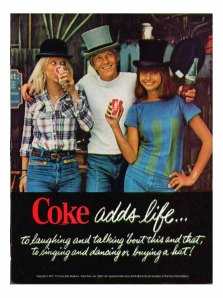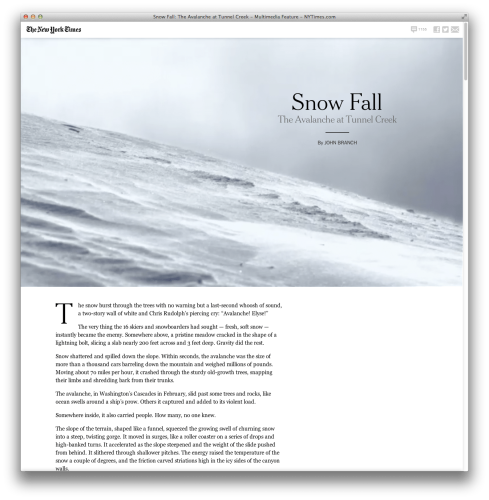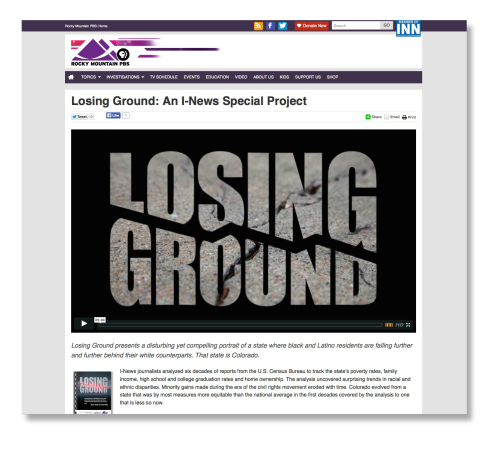I’ve written elsewhere that we’re living through a Cambrian Explosion in the ecology of media. Suddenly — if you think about the last few decades as a fragment of the timeline that stretches back to before cave painting — we can tell stories in so many media forms and on so many media channels that it would make Richard Wagner jealous enough to steal a magic ring. We can make our kunstwerk more gesamt than ever before.
And with this explosion has come a diversity of terms to describe new creations and new arrangements. Multimedia? Crossmedia? Transmedia? What is the difference? I get that question a lot, and it’s a good one.
These three terms can be divided on how they use media form and media channel. Media form is a language a story uses, and it can include text, photographs, illustrations, motion pictures, audio, graphic nonfiction, interactive forms and many others. These forms are then reproduced someplace and that place is a media channel. Journalism channels can include newspapers, magazines, books, television, radio, lectures, museums, game consoles, the Web or a mobile app among many others. There are hundreds of possibilities here.
Multimedia
This is an old term, dating back to before Macintosh computers that smiled at you when you turned them on. Looking for a way to describe the mix of media forms possible in the early digital age we borrowed the term “multimedia.” It spread to journalism production when news first hit the Web. Newspapers in particular grabbed the term to describe telling stories not just with words and still pictures, but also with infographics, sound and then video.
Cinema newsreels and television had been reporting news with text, sound, moving and still images and informational graphics for nearly a century. However, newspapers in the U.S. acted like they had just discovered America. They gave their “discovery” a new name despite the fact that the natives knew it was there all along. “Multimedia” is now applied to almost any kind of digital storytelling.
With multimedia you put many forms to work telling the story, and place them all on one channel. Think about a complex Web publication like the New York Times’ now infamous Snowfall: The Avalanche at Tunnel Creek piece. This is a clear example of multimedia storytelling at an advanced state. They use text, photographs, video, maps and interaction to tell that story, but it’s all on one Website. Though it has its weaknesses, Snowfall was so groundbreaking at launch that its name is now a verb. “To snowfall” something is to produce a Web-based story using the same aesthetics, and the Times continues to polish that style with packages like Tomato Can Blues and Extra Virgin Suicide. The Times isn’t alone either. Others like the Seattle Times’ Sea Change are equally impressive examples of multimedia storytelling.
Multimedia = One story, many forms, one channel.
Crossmedia
This is a term that most likely originates in the advertising industry, and it means to tell a story in many different media channels. Coke added “life” to the 1970s on TV, in print and on radio. In journalism you can see very old examples of this in the venerable wire services. Agencies like The Associated Press, Reuters and others distribute a story through multiple newspapers around the world as well as magazines, radio and TV. But it is the same story, the same set of facts in pretty much the same arrangement. The distribution may include text, pictures and video, but they are all telling the same story in the same way.
A few interesting new agencies, like I-News at Rocky Mountain PBS, have tweaked this model on a regional scale to better distribute investigative journalism to  news outlets strapped for cash and reporters. Where multimedia makes use of the different affordances of media form, crossmedia makes use of the different affordances of media channel. Where the use of form in multimedia appeals to the different learning styles or modes of understanding, channel is used in crossmedia to reach a broader audience.
news outlets strapped for cash and reporters. Where multimedia makes use of the different affordances of media form, crossmedia makes use of the different affordances of media channel. Where the use of form in multimedia appeals to the different learning styles or modes of understanding, channel is used in crossmedia to reach a broader audience.
Crossmedia = One story, many channels.
Transmedia
With transmedia we no longer tell just one story. We tell many stories that put the flesh on the bones of a storyworld. In journalism that storyworld may be an important issue, it may be a community or it may even be a reporter’s regular news beat. Each story is complete in and of itself, but many of them taken together expand our understanding of the larger subject.
Multiple stories on an issue or a beat are not new to journalism. But with transmedia storytelling we place those many different stories on different media channels. This broadens the audience the way crossmedia does, and gives us the incredibly valuable ability to target a journalism audience that can best use the information. Advertisers no longer “spray and pray.” They craft their ads for particular audiences and then place them right under the nose of their targets. They build efficient audiences. When that is done well their targeted publics coalesce into a more effective mass audience.
Transmedia storytelling also strives to lengthen engagement with a story by not repeating itself. We tell multiple different stories in varying forms and place them on many channels. In doing so the reader has reason to look at more than one of those stories, hopefully stretching the time they spend in our storyworld. In journalism we want to deepen engagement with the issue at hand. The longer they spend, the more valuable that information may become.
Producing transmedia in journalism requires partnerships and collaboration. Few journalists have all the skills to produce many stories in many forms all by themselves. This is a team effort, and few legacy news companies control more than one or two media channels. To truly target their audiences they will need to collaborate with the owners of other channels in a mutually beneficial manner. Journalism is no stranger to that collaboration either. For example, newspapers and television stations have partnered on stories for decades.
Transmedia = One storyworld, many stories, many forms, many channels.
Multimedia, crossmedia and transmedia are points on a fluid spectrum that blend from one to the next. Every point on that spectrum has a unique storytelling advantage, giving us a very flexible set of tools for 21st-century journalism.



April 21st, 2014 at 8:54 pm
1. “Transmedia” is an adjective. It should modify something, i.e. transmedia storytelling, transmedia franchising, transmedia marketing, transmedia journalism, etc., all of which are very, very different from each other.
2. It denotes the active movement of content across media, hence the “trans.”
3. This search for definition has been going on for over five years. Welcome to the party. 🙂
4. Practitioners who actually create the stuff for a living usually avoid the term “transmedia” altogether, as different people continue to espouse contradictory definitions to serve whatever agenda they need it to.
5. None of this matters.
6. Make cool, creative stuff.
7. Cheers!
September 23rd, 2015 at 12:19 pm
… how am I not surprised to see you here Steve? 🙂
April 22nd, 2014 at 7:38 pm
[…] See on transmediajournalism.org […]
April 27th, 2014 at 7:06 am
[…] See on transmediajournalism.org […]
May 22nd, 2014 at 8:44 pm
[…] completar esta información. vídeo sobre diferencias entre crossmedia y trasmedia artículo de Transit sobre […]
May 26th, 2014 at 10:19 am
[…] I’ve written elsewhere that we’re living through a Cambrian Explosion in the ecology of media. Suddenly — if you think about the last few decades as a fragment of the timeline that stretches back t… […]
March 24th, 2015 at 3:36 am
[…] I’ve written elsewhere that we’re living through a Cambrian Explosion in the ecology of media. Suddenly — if you think about the last few decades as a fragment of the timeline that stretches back to before cave painting — we can tell stories in so many media forms and on so many media channels that it would make Richard Wagner jealous enough to steal a magic ring. We can make our kunstwerk more gesamt than ever before. […]
September 21st, 2015 at 7:05 am
[…] the audience. I believe that Transmedia is a relatively newer term than multimedia and that they differ greatly, while being quite similar. Multimedia just uses pre-made content to broadcast over various […]
October 23rd, 2015 at 8:23 am
[…] elevates a single story and disperses it across multiple platforms. Transmedia is similar to crossmedia, although with transmedia the story continues expanding and changing rather than merely playing […]
December 4th, 2015 at 11:46 am
Reblogged this on Narrativas cruzadas.
June 19th, 2016 at 4:10 pm
[…] I’ve written elsewhere that we’re living through a Cambrian Explosion in the ecology of media. […]
April 4th, 2017 at 8:29 am
Thanks Kevin for this clear differentiation. It makes absolutely sense. Have you discussed this classification somewhere in an academic publication or are you quoting from someone else? I’m asking because I want to refer to you in a text.
April 8th, 2017 at 12:23 am
[…] Moloney, K. (2014, April 21). Multimedia, Crossmedia, Transmedia… What’s in a name? Retrieved April 4, 2017, from Transmedia Journalism. https://transmediajournalism.org/2014/04/21/multimedia-crossmedia-transmedia-whats-in-a-name/ […]
May 28th, 2017 at 6:15 am
[…] (2014). Multimedia, Crossmedia, Transmedia… What’s in a name?. [online] Available at https://transmediajournalism.org/2014/04/21/multimedia-crossmedia-transmedia-whats-in-a-name/ [Accessed 28 May […]
November 28th, 2017 at 4:35 pm
[…] digitale – non è la rete, attenzione, internet è solo una parte dell’ecosistema che non a caso si chiama transmediale – e in questo ecosistema digitale tutti siamo emittenti e riceventi nello stesso momento, […]
May 15th, 2018 at 12:25 am
[…] Moloney, K. (2014, 21 de abril). Multimedia, Crossmedia, Transmedia… What’s in a name?. Transmedia Journalism, s.p. Recuperado de https://transmediajournalism.org/2014/04/21/multimedia-crossmedia-transmedia-whats-in-a-name/ […]
October 23rd, 2018 at 6:57 pm
[…] also read Kevin Moloney’s article “Multimedia, Crossmedia, Transmedia… What’s in a name?” that explains the characteristics of these three storytelling types. His conclusion […]
November 26th, 2018 at 10:53 pm
[…] Moloney, K. (2011-2018c). Multimedia, crossmedia, transmedia… What’s in a name? Transmedia journalism. Recuperado el 15 de noviembre de 2018 de https://transmediajournalism.org/2014/04/21/multimedia-crossmedia-transmedia-whats-in-a-name/ […]
November 30th, 2018 at 1:36 pm
[…] extendidas, y las que nosotras creemos que acotan mejor cada una de estas narrativas, son las que Moloney (2001-2018c) resume de la siguiente […]
August 15th, 2019 at 2:21 pm
[…] Multimedia, Crossmedia, Transmedia… What’s in a Name? […]
August 22nd, 2019 at 8:17 am
[…] under three umbrella categories: Content, Media Form and Media Channel. I started down this road on this blog a few years ago, using these terms to clearly define the difference between multimedia, crossmedia […]
August 31st, 2021 at 9:07 pm
[…] W ujęciu crossmedialnym najważniejsza jest istota przekazu, który ma dotrzeć do adresata, a nie medium ani tym bardziej preferencje bądź możliwości nadawcy. Inaczej mówiąc na podstawie analizy celów komunikacji wewnętrznej oraz potrzeb pracowników należy opracować treść i dopiero na tej podstawie wybrać najkorzystniejszy kanał przekazu.[1] […]